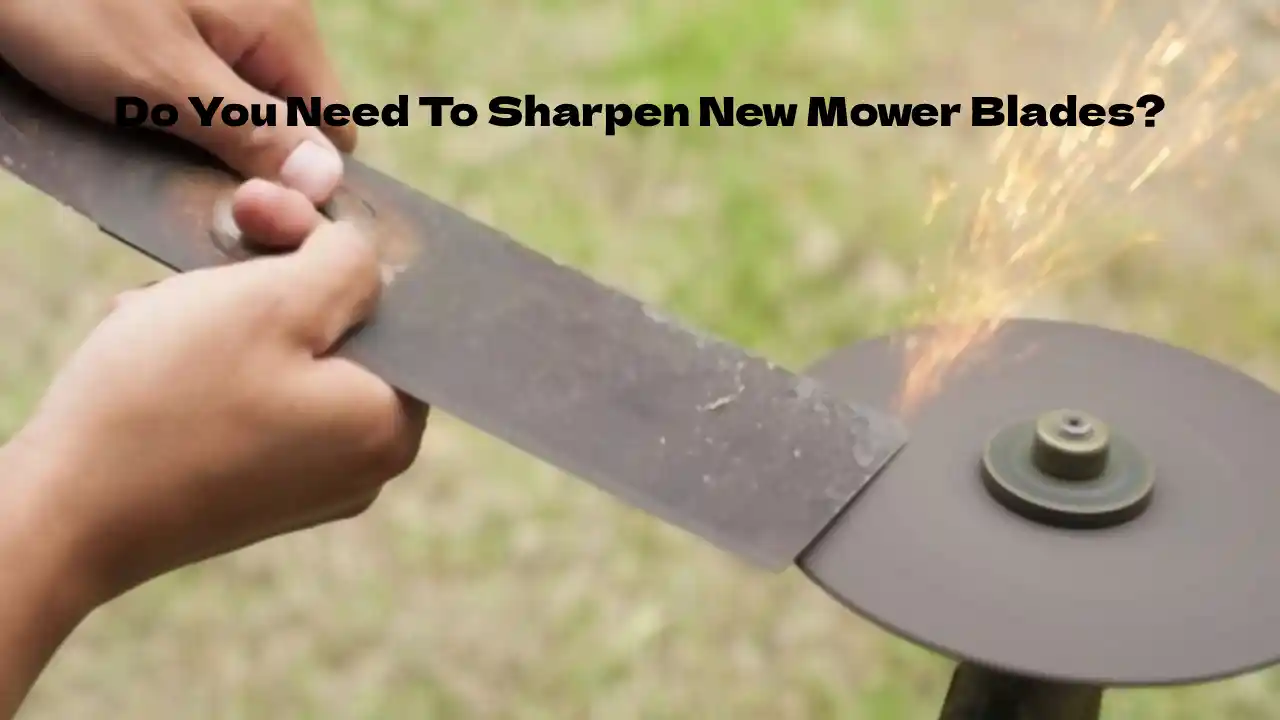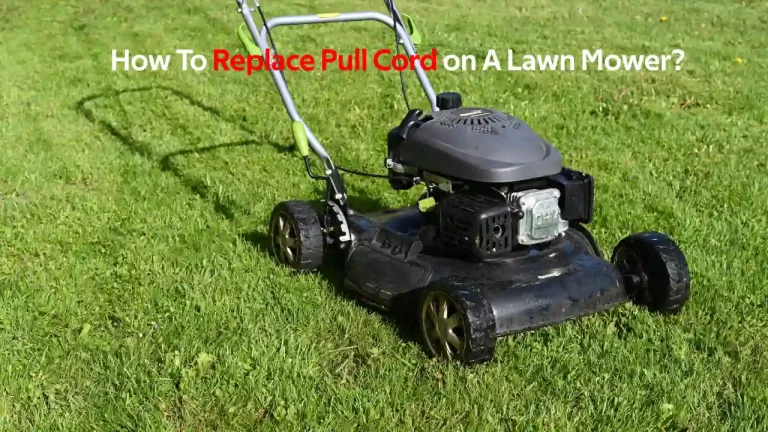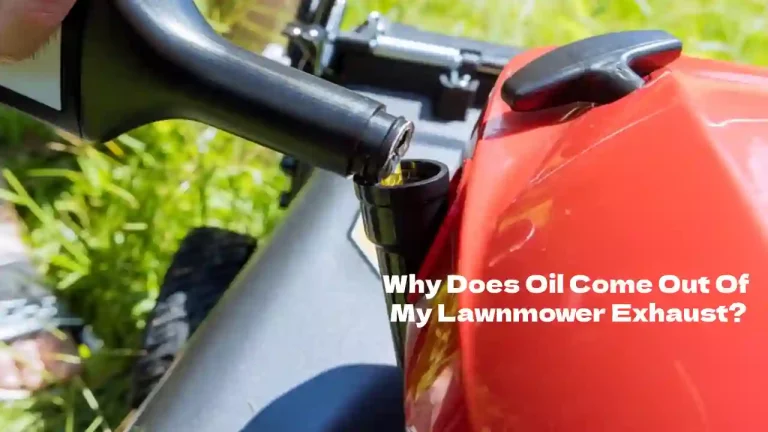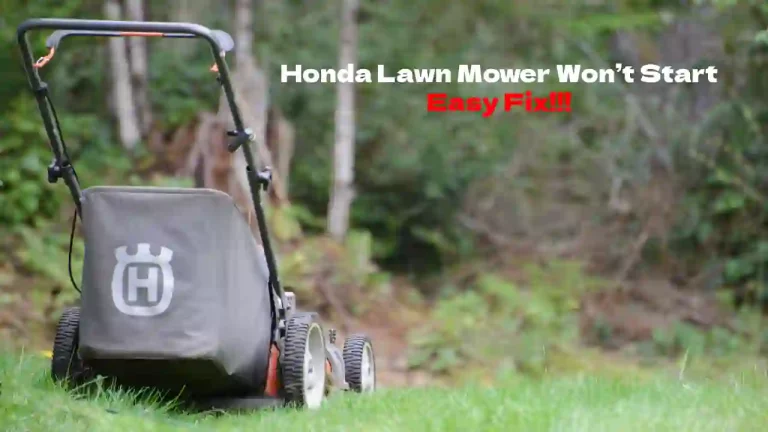Buying a new lawnmower is similar to a new car, although a lot less costly. It’s nice and shiny, and all the parts fit together very tightly. You also can expect it to start very quickly without any hassle, and you hope that you will get many seasons of trouble-free lawn care out of it.
Lawnmowers purchased new will have blades that have been sharpened when the machine was manufactured. The blades on a new lawnmower do not need to. Sharp lawn mower blades are critical to the condition of a well-cut and manicured lawn, and as blades are used, they will become dull.
Although there is no need to sharpen the blades on a new lawnmower, they must be kept sharp. A blade that is not sharp enough “rips” the grass leaf, leaving a jagged edge that invites pests and disease. If a lawnmower blade is sharp enough, the cut of the grass will be cleaner, and the grass will heal faster.
You Don’t Need To Sharpen New Mower Blades
The blades are pre-sharpened to the optimal extent when the lawnmower is manufactured.
These are the only “maintenance” activities you need to do when unboxing your shiny new lawnmower.
- Fit the handles and make sure that the attachments points are correctly aligned.
- That all protective material is removed.
- Tilt the lawnmower and check there is no packaging material securing the blades.
- If it is a four-stroke lawnmower, ensure the oil tank is filled with the correct grade oil.
- Fill the gas tank with correct grade gas.
- Check that the spark plug follows the manufacturer’s instructions, and it should burst into life.
Why Should Lawnmower Blades Be Kept Sharp?
Mowing the lawn to the correct height and with sufficiently sharp blades is a healthy activity for your property which helps make your grass leaf surface grow thicker. A hormone is contained in the tip of each grass leaf that prevents the grass from growing horizontally and promotes vertical growth.
The grass leaf tips are removed when the lawn is mowed, and the horizontal growth is activated.
It results in the grass spreading more actively and causes the grass to grow thicker near the roots.
If the lawnmower blades are not sharp, they are referred to as dull.
The size of the root systems and length of the grass leaf (blade) needs to be in balance. When balanced, the grass will be healthy and can handle all kinds of stress.
Dull lawn mower blades will not cut the grass cleanly but tear the grass, leaving a frayed, brownish edge vulnerable to disease, and it leaves the grass plant.
- Vulnerable to diseases.
- Healthy grass can choke out irritating weeds and invasive grasses.
- Easier targets for pests.
- Deplete the grass’s energy reserves, which inhibit growth.
- Strips the plant of the nutrients and the ability to make its food.
- Removing too much of the leaf surface affects root growth, draws on stored energy in the roots, and starves the grass.
How Often Should Lawnmower Blades Be Sharpened?
After the new lawnmower has run, check the blades’ condition regularly.
The forces that the blades are exposed to can be calculated as follows.
To calculate the distance the blade’s tip travels (circumference of the edge), you apply the formula 2 π R (2*3.144*11 inches= 69.168 inches).
On average, lawnmower blades rotate at 2900 revs per minute, which equals 48 revolutions each second.
It means that the tip of the blade travels 3,320 inches every second.
Translating that to miles per hour equals 188,6 miles per hour (303 km/h).
At this speed, several factors may cause the blade to become dull or unbalanced.
- Hitting stones, roots, or rocks.
- Getting stuck on uneven ground.
- Hitting metal pipes and fences etc.
Each time a strike happens, the blade’s sharp edge will potentially be nicked, bent, or blunted.
After a few strikes, the blade will become blunted and possibly unbalanced.
It is essential to check the blade’s sharpness two to three times a season, depending on the size of the lawn being cut and the frequency with which the lawnmower is used.
Why Do You Need To Balance Lawnmower Blades?
We have discussed the importance of ensuring the lawnmower blades are kept sharp. We have also hinted that the lawnmower blade balance is equally important.
Balancing the lawnmower blades ensures the weight at each side of the component is equal, so the lateral force is the same on each side.
There are two main reasons why you should balance the lawnmower blades.
Reason 1 – Quality Of The Lawn Cut
An unbalanced lawnmower blade will result in an uneven cutting height; it will result in yellow or brown patches appearing in haphazard patterns on your lawn,
Reason 2 – Unbalanced Blades Could Damage The New Lawnmower
An unbalanced lawnmower blade means that one side of the unit is heavier than the other.
The result of this is that an unbalanced lateral force is applied to the
- Blade shaft.
- Blade shaft bearings.
- The spindle.
- The chassis will cause vibrate excessively.
- The camshaft in the engine.
These are potentially serious conditions that will result in the early demise of the new lawnmower.
How Do You Sharpen And Balance Lawnmower Blades?
Although a professional lawnmower repair center can sharpen and balance blades, it is not difficult to do for yourself.
The following steps will get things back into shape.
Step 1 – Assemble The Tools You Will Need
Rather than running backward and forwards, collect the following tools together, making it easier to complete the job in one session.
- Safety goggles.
- Steel brush.
- A wrench to remove the blade.
- A grinder.
- A blade balancer.
Step 2 – Prepare The Lawnmower
Make sure the lawnmower won’t accidentally start and expose the blade.
- Disconnect the spark plug lead (always a good practice when working on a lawnmower.)
- Switch off the fuel tap.
- Tilt the lawnmower so the air filter and carburetor are right-side-up to prevent gas and oil from leaking.
- Use the wrench to remove the blade.
Step 3 – Sharpen The Lawnmowers Blade
Resolve any issues with the blade’s cutting edge.
- Use the steel brush to clean the blade and remove any gunk.
- Check the condition of the blade, looking for any nicks, bends, or dull spots.
- Apply the grinder along the original angle of each cutting edge.
- It is essential to keep the original cutting-edge angle and always grind in that direction.
- Grind equal amounts from both sides of the blade.
Step 4 – Balance The Lawnmower Blade
If you have a blade balancer, this step is made easier.
- Mount the blade on the balancer.
- The heaviest side of the blade will point down (or if you have a wall-mounted unit, the blade will rotate, so the unbalanced side points down).
- Carefully grind a small part off the back of the heaviest side.
- Recheck frequently to ensure you don’t take too much metal off.
- When the blade is balanced, it will not tilt or turn.
Step 5 – Reinstall The Blade
When everything is restored to spec, reverse the process, and reinstall the blade.
Conclusion
Although you don’t need to sharpen the blades on a new lawnmower, if the blade strikes anything solid, such as stones, rocks, roots, or metal edges, the blade will lose its sharpness and possibly balance. It should be sharpened and rebalanced at the next opportunity.
A sharp and balanced blade promotes lawn health, which means you end up with a lush, thick lawn, making the whole cutting and maintenance process worthwhile.






![Why Does The Lawn Mower Leak Gas From The Air Filter? [Fix Easily in Seconds]](https://howtl.com/wp-content/uploads/2022/05/lawn-mower-leaking-768x432.webp)
